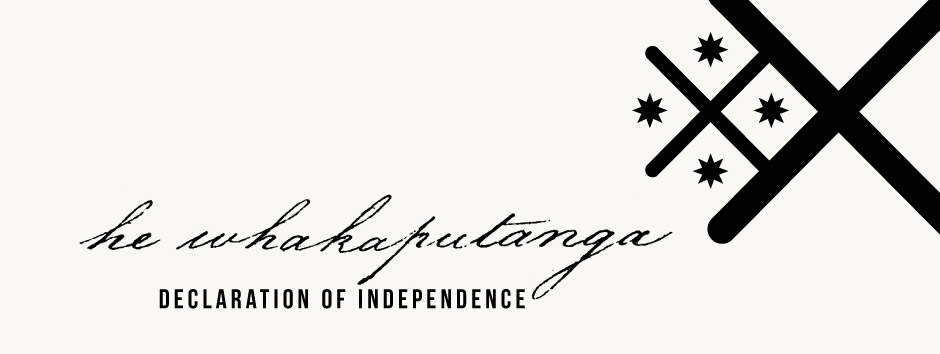Signing details
Based at Kaikohe, Te Rēweti Atuahaere was the principal rangatira and tohunga of Ngāti Tautahi during the 1820s and 1830s. This hapū was closely associated with Ngāi Tawake and figures such as Rewa, Moka Te Kaingamatā, Hōri Kīngi Te Wharerahi and Tītore – all signatories of He Whakaputanga. Atuahaere was an uncle of Hōne Heke Pōkai and the father of at least two sons, Mura and Houmatua. Mura was educated by missionaries and could write in English; Houmatua was killed in January 1846 at the battle of Ruapekapeka, the last major conflict of the 1845–46 Northern Wars.
In September 1831 Rewa and the missionary William Yate returned from Sydney with news of an impending visit to Pēwhairangi (the Bay of Islands) by the French. Rumours soon spread that the French were coming to take the country and, after an important gathering at Kerikeri, 13 rangatira, including Atuahaere, signed a letter to King William IV. Atuahaere’s loose, expressive tohu on the letter is one of the largest.
Atuahaere was probably among the rangatira who helped select Te Kara, the United Tribes’ flag, on 20 March 1834. Around this time he also converted to Christianity. In a letter written by his son Mura to William Yate, Atuahaere asked the missionary to come to Kaikohe to baptise him, describing himself as an old man and a venerable chief. Yate baptised him Te Rēweti (Davis) on 8 June 1834.
When Te Rēweti Atuahaere signed He Whakaputanga on 28 October 1835, a combination of his birth and baptismal name was recorded. This was the name he also used to sign Te Tiriti o Waitangi on 6 February 1840. It is likely that he was present at the second Treaty hui, held at Te Waimate on 10 February, where a further six rangatira signed. Historian Kathleen Shawcross notes that by the 1840s Atuahaere’s leadership was shared with younger men like Taiwhanga and Hōne Heke.


Community contributions